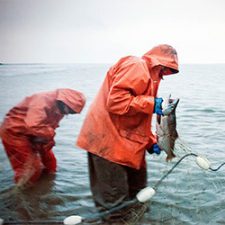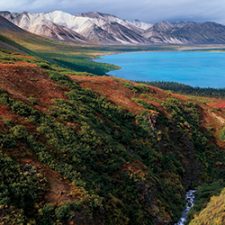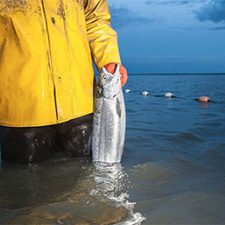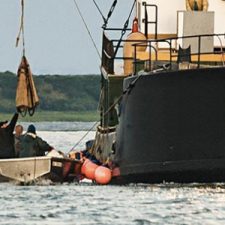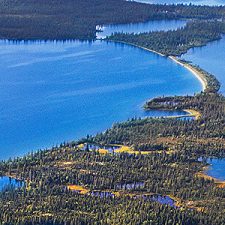Bristol Bay, Western Alaska
Bristol Bay Watershed
Communities, Fisheries & Environment
The pristine waters of Bristol Bay, Western Alaska, are home to the world’s-largest sustainable commercial salmon fishery. All five species of wild salmon — millions of coho, chinook, sockeye, pink and chum — spawn here every year and then migrate to the Bering Sea and back.
Salmon is critical to Bristol Bay’s watershed ecosystem and the local economy, and is embedded in the lifestyle and culture of the Native Alaska people.

The People
Three Alaska Native cultures thrive in the Bristol Bay watershed. While each has distinct languages, customs and traditions, they’re tied by a shared way of life and common values. They embrace the vision of protecting their land and resources, celebrating their heritage and legacy, and enhancing the lives of their people. Salmon is not only an economic engine and a primary food source — it is at the heart of their culture and subsistence lifestyle.
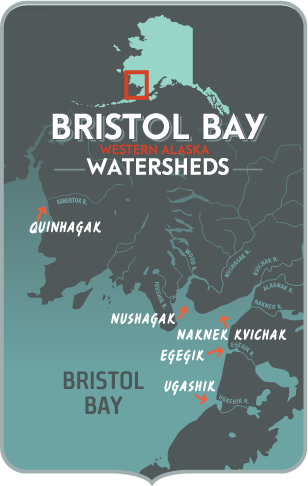

The Places
About the size of the state of Oklahoma, the Bristol Bay area is home to 31 communities and 7,400 residents. With no access to Alaska’s road and highway infrastructure, they rely on air and water as their link to the rest of the state (and the world). Transportation through the rugged terrain connecting the local villages is limited to small airplanes, boats, all-terrain vehicles and snowmobiles.

The Environment
The Bristol Bay’s pristine, wild country has a rich wildlife habitat that includes more than 40 species of terrestrial mammals, 190 types of birds and nearly 30 fish species. Salmon is essential to the health of the local marine and terrestrial ecosystem. Survival of the wildlife — including several threatened or endangered species — and the productivity of the native vegetation depend on the influx of nutrients derived from salmon.

The Economy
About 40 percent of the seafood in the United States and half of the world’s wild sockeye comes from Bristol Bay. The multimillion-dollar commercial-fishing industry creates thousands of jobs. During the short salmon season, Bristol Bay processors can produce as much as 2.5 million fish each day and 160 million pounds of salmon annually. Tourism is Alaska’s second-largest industry, and sport fishing in Bristol Bay brings $90 million in taxes and licenses to the state.

